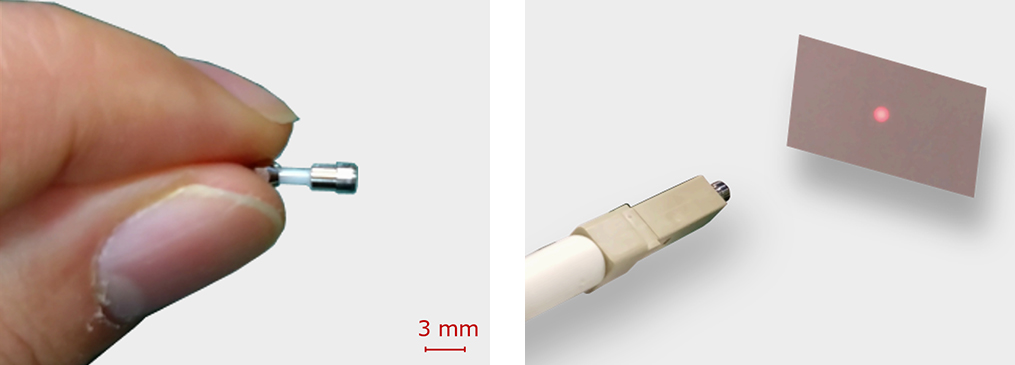
Unlike conventional connectors, expanded beam connectors provide high durability and stability by utilizing an expanded beam of light. This feature prevents the end-face from contamination even after repeated use of connection and dis-connection, making maintenance easy. The connector is also adaptable to special environments and will remain dependable even in harsh environments.
Expanded beam connection technologyUnder Development
Expanded beams employ a technology that expands the beam for transmission. This technology has several advantages.
-
1. Connection made by non-contact spatial propagation
Connectors can be connected to each other by non-contact air gap space propagation. This prevents wear and tear and improves long-term reliability.
-
2. Highly resistant to contamination
Designed to resist contamination (dirt and foreign matter), so it is not affected by the environmental conditions. Easy to manage since end-face cleaning is not required.
-
3. High-precision coaxial (concentricity) characteristics
By utilizing our high-precision processing technology with more than 40 years of experience in ferrule and sleeve manufacturing allows for reduced loss fluctuation in connector tuning.
-
4. Customizable
In-house optical and mechanical design enables customized optical characteristics and size. Sleeves and ferrules can also be manufactured in-house, allowing for a high degree of design freedom.
-
5. Applicable to various connector types
Expanded beam connection technology has been established and can be applied not only to LC connectors but also to a variety of other connector types.
-
6. Adaptation to special environments
Expected to remain dependable even in special environments, these characteristics allow for expanded beam connectors to provide high performance in a wide range of applications and reliability, especially in harsh environments.
Comparison of termination methods
New method
Expanded Beam (Collimated Beam)

The use of a lens results in a non-contacting spatial coupling of the end faces, which reduces insertion loss variation in rotation movement. It also has the advantage of being less susceptible to end-face damage and contamination eliminating the need for end-face cleaning.
Conventional method
Physical Contact (PC)

Since ferrule end faces make physical contact to each other to form a connection, the insertion loss (IL) is excellent. However, the ferrule is more susceptible to wear due to rotation movement and thus, a higher risk of end-face damage and contamination is present, and the end faces must be cleaned.
Special Characteristics
Design Example
Singlemode type (@1550nm)
Radiation angle (1/e2): φ160 μm
・Radiation angle (1/e2): <1°
Multimode type (@850 nm)
・Beam diameter (5%): φ380 μm
・Radiant angle (5%) : <3°
Rotation Loss Variation

Multimode type expanded beam

Expanded beam and butt-coupling
Applications
- Medical Equipment
- Automotive
- Aviation
- Defense
- Broadcasting and video equipment
- Telecommunications
- Testing and Measurement equipment











